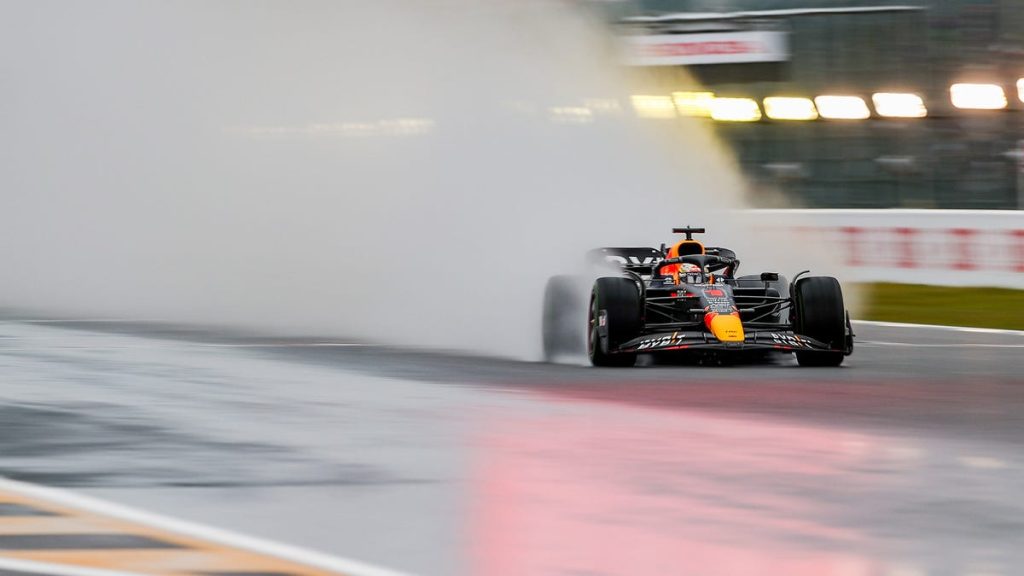F1 Hopes Wet-Weather Wheel Arches Will Prevent Another Rain-Shortened Race

Photo: Peter Fox (Getty Images)
Nobody — not the fans, drivers, teams or anyone involved with Formula 1 — wants to see a repeat of the events of the 2021 Belgian Grand Prix, or even this year’s race-shortened Suzuka race. It’s for this reason that the FIA will be instituting wheel arches for especially wet races at some point in the future. That could come possibly as soon as the second half of 2023, though we might have to wait until 2024 before we see the proposed solution in practice.
Nikolas Tombazis, the technical director for single-seater racing at the FIA, recently shed some light to Motorsport.com about the philosophy behind the new shrouds, when they’ll be deployed and what effect they may have on the cars.
For starters, Tombazis doesn’t want these to be broken out for every race with the potential of precipitation. He envisions us seeing them on “maybe three” occasions per season. Also, once they’re on the car for a session, they won’t be taken off, and the FIA doesn’t want teams to hurriedly fit them during pit stops. They’ll go on for all cars before the green flag, or during a red flag period if they weather gets too poor, to reduce those blinding clouds of spray.
As you’d expect, the governing body is conducting plenty of its own simulations in the development phase. It seems the impact on the aero profile might not be as awful it sounds; if you want to see how they might look, The Race has a good illustration. On the flip side, computers haven’t completely eliminated the trial-and-error part of the process.
“We have done a lot of CFD simulations, because we want to make sure the effect of these devices is relatively small on the overall aerodynamics,” added Tombazis. “There still is an effect, but not a massive one.
“Also, we are simulating the droplets of the rain and so on, and seeing how it affects spray. What is a bit of a challenge in the simulations is to determine the relative proportion of what comes from the diffuser to what comes from the tyres.
“Once we have a solution, we’ll get to do some prototypes and run them on some cars to try and evaluate that properly.
“I’m expecting that it’s going to be a maybe 50 percent improvement kind of thing.”
Tombazis also revealed to Motorsport that the project was escalated after the tricky conditions in Japan, which halved the race, raised the potential for a tragedy that thankfully didn’t come to pass, and had everyone, even commentators, wondering how Max Verstappen clinched his second title.
“Spa in 2021 still left scars on the sport because it was very unfortunate circumstance,” explained Tombazis. “It would have been 10 times worse I think if we had gone all the way to Japan and had to pack up and come back. We really need to avoid that.
“We have so many people watching, spectators paying tickets, teams travelling all over the world, and then to suddenly say we can’t race is not very responsible of us.
“I think it will bring the raceable conditions from what is maybe currently intermediate tyres, as you almost never race with the wet tyres, I think it’ll bring it well into the wet tyre territory.”
I hope it works and full wets can actually be used for proper racing going forward, but then I also eagerly anticipate race control’s first botched call in whether to bring the covers out in either-way conditions.



